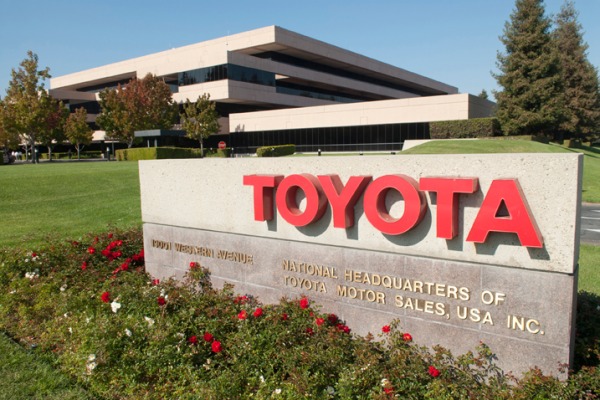
Toyota Motor North America reached the settlement of a long-fought class-action lawsuit stemming from charges of unintended acceleration in its vehicles — an allegation ultimately disproved by investigators. A federal judge ratified the $1.2-$1.4 billion Toyota lawsuit settlement in March 2014 while admonishing the automaker for corporate misconduct. Here are some details as to how this affects the 19 million current and former owners of Toyota, Lexus and Scion vehicles from model years 1998-2010 that were sold in the U.S.
Lawyers for Toyota owners filed the class-action lawsuit in 2010, alleging that the automaker's cars suddenly accelerated due to flaws in the electronic throttle control systems (ETCS). Toyota owners claimed that fatal accidents resulted from these defects. In some cases, investigators found that loose or thick floor mats had entrapped the gas pedal, causing the unintended acceleration. In other cases it appeared that the gas pedal linkage could stick in an open position leading to loss of control for the driver.
The Toyota unintended acceleration lawsuit settlement compensated owners for the loss in value of their vehicles when they sold them, among other remedies. The much stickier issue of alleged injuries from unintended acceleration is still being resolved and is likely to remain in the courts for years to come.
What does all this mean for current and past owners of Toyota vehicles? Here are answers to the most common questions about the Toyota unintended acceleration class-action lawsuit settlement and its terms.
Did the settlement conclude that Toyota vehicles had accelerated unexpectedly due to flaws in the cars?
Lawyers for both sides state that investigators from the National Highway Traffic Safety Administration (NHTSA) and the National Aeronautics and Space Administration (NASA) were unable to link allegations of unintended acceleration to flaws in the electronic throttle. Instead, investigators blamed driver error or floor mat entrapment. "Reliable scientific evidence and multiple independent evaluations have confirmed the safety of Toyota's electronic throttle control systems," Christopher P. Reynolds, general counsel for Toyota Motor Sales USA, said in a statement. In a news release on his firm's Web site, Steve Berman, attorney for the plaintiffs, said, "We are eager to move the process forward so we can ultimately distribute funds to Toyota owners as well as install brake-override systems in more than 3 million vehicles."
If Toyota cars were not at fault, why is the carmaker agreeing to this settlement?
Toyota attorney Reynolds explained: "We concluded that turning the page on this legacy legal issue through the positive steps we are taking is in the best interests of the company, our employees, our dealers and, most of all, our customers." And, no doubt, the cash settlement compensating owners for a loss in value of their vehicle will help Toyota maintain the good will of its customers.
Which Toyota vehicles are affected by the unintended acceleration lawsuit settlement?
The settlement covers Toyota, Lexus and Scion vehicles from model years 1998-2010 that were sold in the U.S. The vehicles include the popular Toyota Camry and Toyota Corolla. All the models subject to the settlement are listed at the Toyota Economic Loss Settlement Web site's Frequently Asked Questions.
What does the settlement provide for past and present Toyota owners?
Two main parts of the settlement affect owners. Toyota will spend more than $1 billion to compensate owners for a loss in value of their vehicles due to recalls related to unintended acceleration. Also, Toyota will install — under warranty — brake-override systems in an estimated 3.25 million vehicles. The system will mean that if a driver steps on the accelerator pedal and the brake pedal at the same time, the car will stop.
What happens next?
For the latest information on the economic loss settlement, Toyota recommends visiting the Toyota Economic Loss Settlement Web site or calling (877) 283-0507.
How will current and former Toyota owners be compensated for loss of value to their vehicles?
The settlement establishes a fund of $250 million to pay former Toyota owners who sold their cars during the period from September 1, 2009 through December 31, 2010, according to a statement by Hagens Berman. Money from the fund compensates Toyota owners for the alleged reduced value of their cars as a result of the publicity concerning unintended acceleration. Payments from a separate fund of $250 million compensate current owners whose vehicles are not eligible for a brake-override system, according to Hagens Berman.
How much will Toyota owners receive?
The amount consumers receive depends on the model and year of their Toyota, and the U.S. state in which the owner bought the car.
Are there changes to the warranties for existing Toyota owners?
The Toyota unintended acceleration lawsuit settlement provides that all 16 million current owners of Toyota, Lexus and Scion vehicles from the 1998-2010 model years covered by the settlement will be eligible for a customer care plan that lasts for 3-10 years and which warranties specific parts that plaintiffs allege are tied to unintended acceleration.